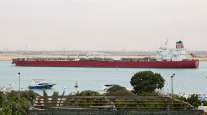Tank Truck Carriers to Experience Strong Year Despite Costs, Capacity Concerns, Experts Say
This story appears in the May 30 print edition of Transport Topics.
BALTIMORE — Nearly all tank truck carriers can expect a strong 2011 because of solid manufacturing sector growth, though tight capacity and rising costs will make the road to prosperity more challenging, industry experts said.
“The good news is the economy is improving,” American Trucking Associations Chief Economist Bob Costello said at the National Tank Truck Carriers annual meeting here. “You will have to keep a close eye on costs. You are going to have to pay drivers more, and there is nothing to suggest a significant amount of capacity will enter the industry anytime soon.”
Costello predicted manufacturing sector growth of 6.5% this year and 5% in 2012, which will boost demand for tank fleets that supply the plastics, chemical, food and automotive industries.
The only tank sector that will struggle, Costello said, was cement haulers that supply the construction industry.
Kevin Sterling, a BB&T Capital Markets analyst, also stressed the positive economic trend, saying that industrial production has grown 23 straight months with particular strength in areas such as chemicals.
Costello said that tank-truck volumes are nearly back to pre-recession levels, even as truckload volumes as a whole still lag 2007 figures by about 10%.
Meanwhile, on the cost side, Costello predicted that wages will have to rise for drivers to restore earlier cuts and to keep pace with the construction and manufacturing sectors that draw from the same potential labor pool.
Sterling said that he believed driver pay, now at about 40 cents per mile, may need to rise 10 cents to 15 cents to attract an adequate number of drivers.
Still another cost, Sterling said, is maintenance, which has crept up to 13.6 cents a mile for tractors that are 5 to 6 years old. Maintenance costs for trucks between 2 and 6 years old are less than half that amount, he noted.
Businesses also will have to hire workers to expand production, Sterling added.
Dennis Slagle, CEO of Volvo Trucks North America, testified to the hiring market, noting that 300 people now are working at a Macungie, Pa., plant, nearly all of whom are new hires who were recruited at a job fair.
“We are very, very pleased. We are getting good, hungry people,” Slagle said.
Many of the new workers are recent high school or college graduates who have turned to truck manufacturing because their first post-graduation job didn’t pan out as expected, he said.
Costello raised another cost issue.
“I guarantee a huge number of you are concerned about inflation,” he said, particularly fuel and tires.
ATA pegs 2011 diesel spending at $139 billion and 2012 expenses at a record $146 billion, $3 billion over the 2008 pricing peak. Diesel costs totaled $102 billion last year.
Inflation is hitting manufacturers, as well.
“Everything is going up faster than we can control,” Slagle said, citing steel and rubber as examples.
He told Transport Topics that manufacturers have begun to impose raw materials surcharges of about $900 to offset those expenses. The surcharges will take full effect this summer, he said.
Slagle also said to expect more pressure on used truck prices because so few tractors were sold in 2008 and 2009.
“You can look forward to a tight used-truck market for the last several years,” he said.
While he warned about costs, Slagle was upbeat about other developments.
“Truck orders are very, very strong,” he said. “It feels pretty good as a manufacturer to see those numbers coming in.”
For the first four months of 2011, orders have reached 118,450, or nearly triple the pace in the same period last year, he said.
“We don’t expect this level of order trends to continue,” Slagle said, emphasizing that he believes the orders being received will put the manufacturers back on a normal replacement cycle.
“People are trying to get orders in before any materials surcharges,” he said. “We will be leaving 2011 on an upward trend. This isn’t a bubble.”




